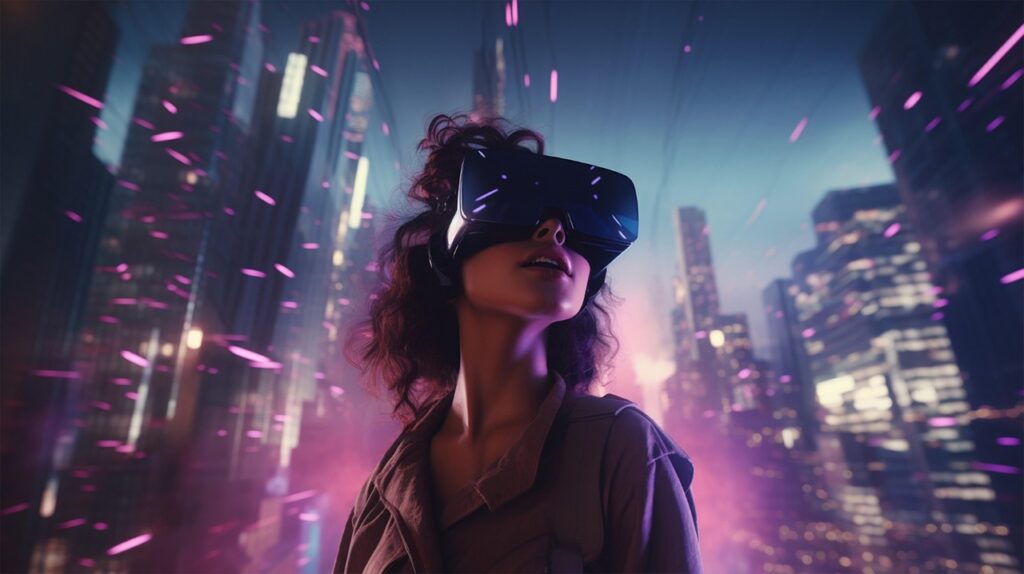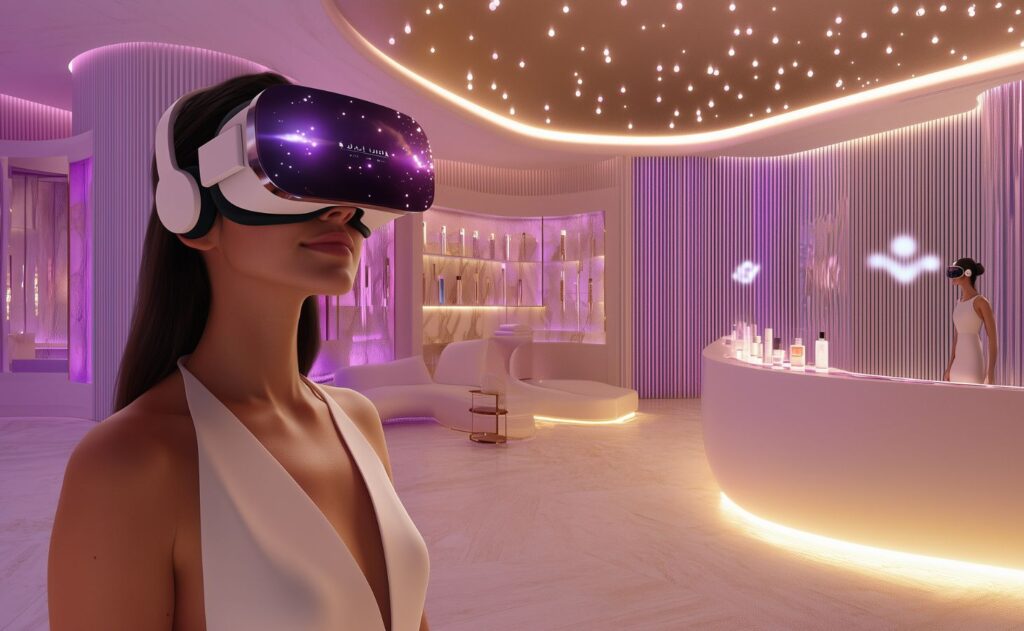Virtual reality has been on the rise again in recent years and is beginning to be used in many different fields. One of the most important elements of this immersive experience is of course a headset!
This blog post will focus on the four headset options worth investing in. Currently, there are several different versions of VR glasses and headsets to choose from, which differ in price, functions, and the need to own additional equipment. Since the VR glasses and headsets on the market satisfy a series of demands for different types of public, we must consider a series of factors. Virtual Reality glasses and headsets are suitable for almost all age groups who want to have a unique experience. VR is not just for gaming anymore but even social events, business applications, virtual tours and fashion experiences!
Let’s take a closer look at the options we chose:
Oculus Quest 2
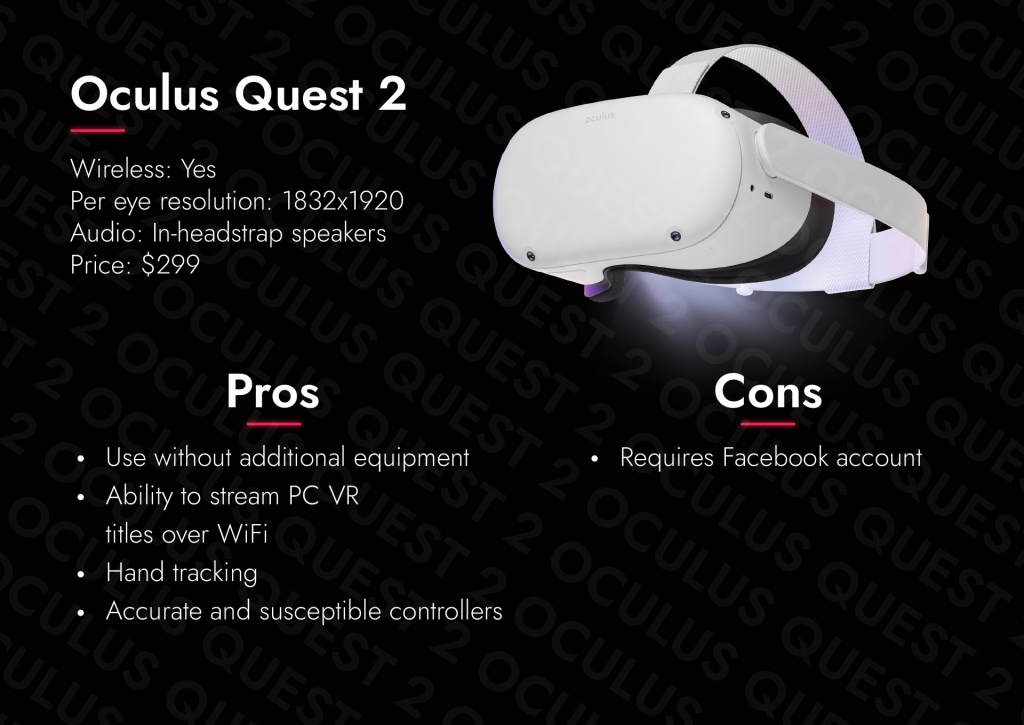
The best stand-alone VR headset is Facebook’s Oculus Quest 2; it is an all-in-one viewer that does not require a PC or other peripherals and is excellent for those who want to experience virtual reality without using a computer. Furthermore, it is an ideal solution for those who wish to have complete freedom of movement, use it on the go, or take it to a friend’s house. The resolution per eye alone is 1832 x 1920 pixels. Originally, Oculus Quest 2 had only a 72Hz refresh rate, but the company released a software update that included using up to a 90Hz refresh rate. The battery lasts for about two hours – for prolonged use charge it via USB-C. The package includes perfect controls for monitoring the movement of the hands; motion monitoring and thanks to inside-out tracking, no additional hardware is required to track the movement of the user in space. However, keep in mind that the Oculus headset requires logging in with a Facebook account.
Pros:
- Use without additional equipment
- Ability to stream PC VR titles over WiFi
- Hand tracking
- The drivers are susceptible and accurate
Cons:
- Requires Facebook account
Oculus Quest 2 standard price: $299
Curious how to implement VR into business? Click here.
Sony PlayStation VR
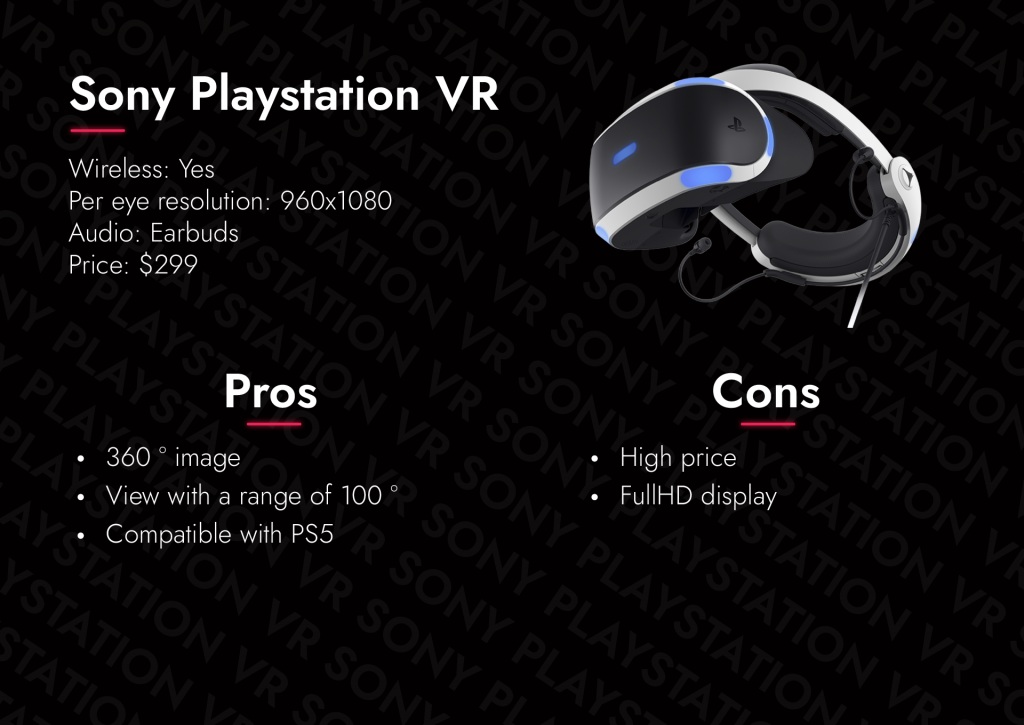
The Playstation VR is the must-have choice for playing on PS4 and PS4 Pro as well as a next-generation virtual reality system for PS5. Designed specifically for the Sony console, it is the perfect complement to take your gaming experience to the next level. It is part of a series of peripherals that transform the regular console into a virtual reality console. First, the headset must be connected to the console via cable and used in conjunction with the PlayStation Camera, which must be purchased separately. Once this is done, you will have a tremendous 5.7-inch OLED display with Full HD resolution at 120 fps for smooth gaming sessions and clear images.
3D audio adds realism to every scene, thanks to directional sounds and different distances; plus, the built-in microphone allows you to communicate with other players online.
Prons:
- 360 ° image
- View with a range of 100 °
- Two drivers
Cons:
- High price
- Full HD display
Sony Playstation VR standard price: $299.99
HTC Vive Pro
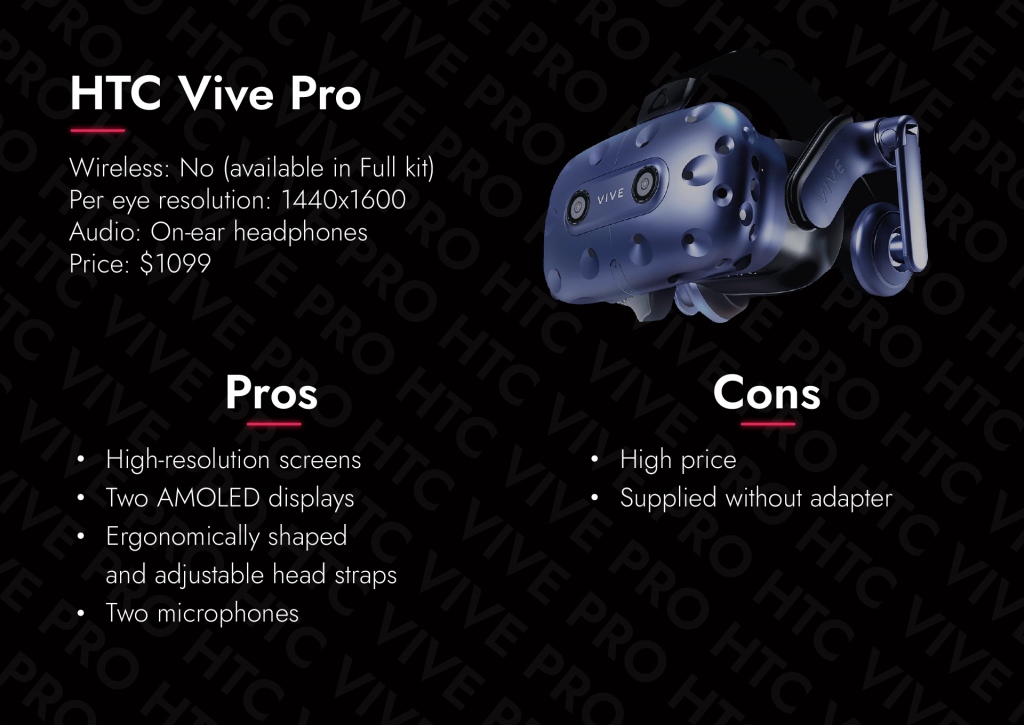
HTC Vive Pro VR glasses have a screen with a resolution of 2,880 × 1,600 px, a pair of 3.5 AMOLED displays with a solution of 1440 × 1600 px and a refresh rate of 90 Hz, integrated gyroscope, accelerometer, SteamVR Tracking, two microphones and a dual camera, thanks which bring the user an incredibly realistic experience. You’ll also find integrated HiRes headphones with 3D surround sound playback that can locate the source sound. HTC Vive Pro VR glasses use Intel WiGig technology, which transmits image and sound wirelessly, WiFi module sold separately. Power is supplied via the Vive Wireless adapter, which is not included in the delivery. The head straps are set in size.
Prons:
- High-resolution screen
- Two AMOLED displays
- Two microphones
- Ergonomically shaped and adjustable head straps
- Wireless (not included in the base package)
Cons:
- High price
HTC Vive Pro standard price: $1098.99
Contact Us to see how Immersive Experiences can work for you!
HP Reverb G2
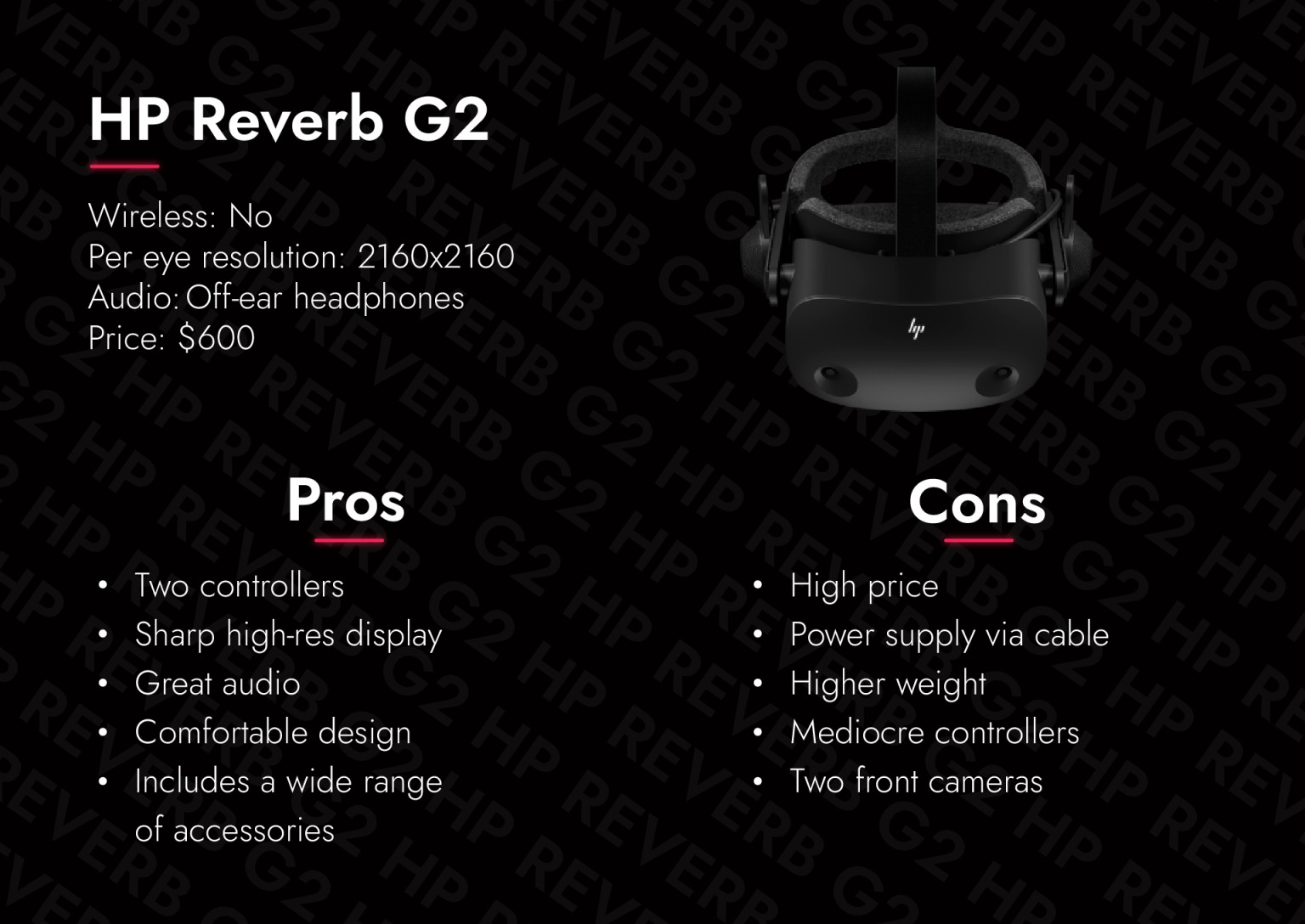
Like its predecessor, and unlike the Oculus Quest 2, it is a headset designed exclusively to be connected to a PC. The flagship feature remains unchanged from the original Reverb with two 2.89-inch displays that offer a resolution of 2160×2160 pixels per eye, the highest on the market if we exclude even more niche products such as the esoteric Pimax viewers. Reverb G2 was developed with the collaboration of Valve. It introduced some important innovations: double the cameras for tracking movements and above all the controllers, also renewed, and new integrated headphones borrowed directly from the Valve Index have been developed. New lenses were also fitted, again made in collaboration with Valve, and mechanical control of the intra-pupillary distance was introduced. Therefore, on paper, it is at the specifications, one of the best viewers for the Windows Mixed Reality platform and certainly one of the most interesting for PCs.
Prons:
- Two controllers
- Sharp high-res display
- Great audio
- Comfortable design
- Includes a wide range of accessories
Cons:
- High price
- Power supply via cable
- Higher weight
- Mediocre controllers
- Two front cameras
HP Reverb G2 standard price: $600
When choosing and buying VR headsets and glasses, keep in mind that they must be compatible with the device you will be using; they must give you a sufficiently accurate impression of virtual reality. We hope this list was helpful and you consider purchasing a VR headset for personal use or for your business!
Check out our other projects here!
👋 get in touch
By clicking the “send” button, I agree to the collection and processing of my personal data as described in the Privacy Policy.


